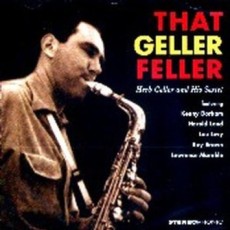
Daily Dose Of Jazz…
Herb Geller was born Herbert Arnold Geller on November 2, 1928 in Los Angeles, California. His initial exposure to was from his mother who played piano accompanying silent films at a Hollywood theater. At the age of 8, he was presented with an alto saxophone and two years later started clarinet. He went to Dorsey High School, joined the school band with Eric Dolphy and Vi Redd. At the age of 14, after hearing Benny Carter live in performance, he decided to pursue a career a music career playing his original instrument of study.
By age sixteen Geller had his first professional engagement in the band of jazz violinist Joe Venuti. A short time later he discovered Charlie Parker and Johnny Hodges and along with Carter became important idols for him. A move to New York City in 1949 saw him performing in the bands of Jack Fina with Paul Desmond, Claude Thornhill, Jerry Wald and Lucky Millinder. It was during this time he met hi future wife and musical partner Lorraine Walsh.
After three years in New York, Herb joined the Billy May orchestra in 1952 and, following an engagement in Los Angeles, returned there to live. He worked and recorded with Shorty Rogers, Maynard Ferguson, Bill Holman, Shelly Manne, Marty Paich, Barney Kessell, Andre Previn, Quincy Jones, Wardell Gray, Jack Sheldon, and Chet Baker. He recorded three album as a leader for Emarcy plus some with Dinah Washington, Max Roach, Clifford Brown, Clark Terry, and Kenny Drew.
In 1955 he won the “New Star Award” from Down Beat Magazine, worked in the bands of Louis Bellson and Benny Goodman, played bossa nova in Beazil and sailed to Europe and played in Paris with Kenny Clarke, Kenny Drew, Martial Solal, Rene Thomas and toured with a French radio show, Musique Aux Champs-Elysées. He would go on to work with the RIAS Big Band in Berlin, play lead alto and arrange for the NDR Big Band in Hamburg and for twenty0eight years made the city his home. During this period her performed with Don Byas, Joe Pass, Sloide Hampton, Bill Evans, Red Mitchell, Art Farmer, Georgie Fame, Ray Charles, Ella Fitzgerald, Baden Powell, Peter Herbolzheimer and George Gruntz.
He composed for two musicals Playing Jazz, a musical autobiography and Josie B, based upon the life of Josephine Baker, taught at the Hochschule fur Muzik, and wrote a method of improvisation called crossover, was knighted, and awarded the Louis Armstrong Gedachtnispreis. Alto saxophonist Herb Geller who also played clarinet, flute, oboe, English horn and passed away of pneumonia in a hospital in Hamburg, Germany, aged 85, on December 19, 2013.
More Posts: english horn,flute,saxophone
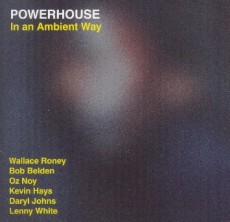
Daily Dose Of Jazz…
Bob Belden was born James Robert Belden on October 31, 1956 in Evanston, Illinois but was raised in South Carolina. He studied saxophone and later attended the University of North Texas.
In 2008, he arranged and produced Miles from India, a world fusion music record based on the compositions of Miles Davis. In the record, he assembled alumni of Davis and musicians of India. As producer he is mostly associated with the seminal reissue of the recordings by Miles Davis for Columbia Records.
In addition to his work as arranger, composer, conductor and A & R director, Belden contributed numerous liner notes for noted recordings, such as Lou’s Blues by Lou Marini and the Magic City Jazz Orchestra, with some of his liner notes receiving Grammy Awards.
Shortly before his death, Bob became the first American musician in 35 years to bring a band from the States to Iran to perform. He may be best-known for his Grammy Award winning jazz orchestral recording, Black Dahlia. He recorded nine albums as a leader and performed and recorded as a sideman or collaborated with Paquito D’Ribera, Tim Hagans, Nicolas Payton, Sam Yahel, John Hart and Billy Drummond to name a few.
Tenor and soprano saxophonist, arranger, composer, bandleader and producer Bob Belden died of a heart attack on May 20, 2015, at Lenox Hill Hospital in Manhattan at the age of 58.
More Posts: saxophone
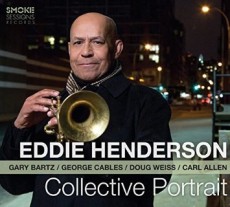
Daily Dose Of Jazz…
Eddie Henderson was born on October 26, 1940 in New York City. His mother was an original Cotton Club dancer and his father sang with a popular singing group of the day, Billy Williams and The Charioteers. At the age of nine he got an informal lesson by Louis Armstrong and continued his study of the instrument as a teenager at the San Francisco Conservatory of Music, after his family moved there in 1954. As a young man, he performed with the San Francisco Conservatory Symphony Orchestra. In 1957 he met Miles Davis, a friend of his parents and played a gig together when he was just 17.
After three years in the Air Force, Henderson enrolled at the University of California, Berkeley graduating with a B.S. in zoology in 1964. He then studied medicine at Howard University, then went back to the Bay area undertook his residency in psychiatry in 1968, he practiced general medicine from 1975 to 1985 in San Francisco part-time for about four hours a day working at a small clinic.
His break in music came when he took a weeklong gig with Herbie Hancock’s Mwandishi band that led to a three-year job. It was during this period in the early 70s that her recorded three albums with the group but more importantly came out as a leader and recorded his debut album Realization followed by Inside Out.
After leaving Hancock, Eddie worked extensively with Pharoah Sanders, Mike Nock, Norman Connors, and Art Blakey’s Jazz Messengers. He joined Latin jazz band Azteca, recorded with Charles Earland and fronted his own bands, both jazz and rock-oriented. However, recognized for his work with Hancock, his own records were considered too commercial.
By the 1990s, Henderson returned to playing acoustic hard bop, touring with Billy Harper while also working as a physician. He recorded at Miles tribute album So What? with Bob Berg, Dave Kikoski, Ed Howard and Victor Lewis. He has collaborated with his wife Natsuko who composed Tender You, Precious Moment, Around the World in 3/4 and Be Cool.
As an educator trumpet and flugelhorn player Eddie Henderson has been a faculty member of Juilliard since 2007 and is Associate Professor of Trumpet at the Oberlin Conservatory Jazz Department, beginning in 2014. He has recorded 23 albums as a leader, has released two anthologies, and recorded nearly four-dozen sessions as a sideman with Benny Golson, Mulgrew Miller, Richard Davis, Gary Bartz, Leon Thomas, Billy Hart, McCoy Tyner, Mal Waldron, Stanley Cowell, Grover Washington, Jr., Kenny Barron, Joe Farnsworth and the Mingus Big Band to name a few.
More Posts: flugelhorn,trumpet
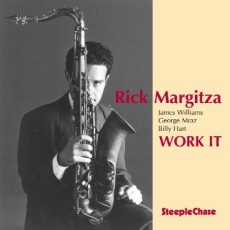
Daily Dose Of Jazz…
Rick Margitza was born in Dearborn, Michigan on October 24, 1961. His paternal grandfather, a Hungarian Gypsy violinist taught him to play the violin at the age of four. Following this he played piano and oboe, and settled on tenor saxophone while at Fordson High School.
After attending several colleges, Wayne State University, Berklee College of Music, University of Miamiand Loyola University in New Orleans, Rick toured with Maynard Ferguson and Flora Purim in the 1980s. A move to New York City presented him the opportunity to playwith Miles Davis.
Between 1989 and 1991, Margitza released three sessions for Blue Note Records, his debut being Color followed by Hope and This Is New. He has recorded copiously for EMI, Challenge, Steeplechase, Palmetto, snd Nocturne Jazz record labels as well as a sideman with Eddie Gomez, Tony Williams, Bobby Hutcherson, Maria Schneider, McCoy Tyner, Chick Corea, Stanley Cowell, Steve Masakowski, Andy Laverne, .
In 2003 Rick Margitza moved to Paris and has performed with Martial Solal, Francois Moutin, ri Hoenig, Franck Amsallem, Jean-Michel Pilc and Manuel Rocheman. He composed a saxophone concerto and two symphonies for orchestra and the tenor saxophonist continues to perform, compose and record.
More Posts: saxophone
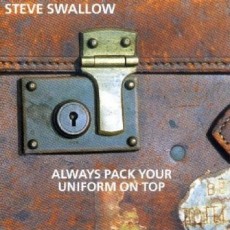
Daily Dose Of Jazz…
Steve Swallow was born October 4, 1940 in Fair Lawn, New York. As a child, he studied piano and trumpet before turning to the double bass at age 14. While attending a prep school, he began trying his hand in jazz improvisation. While attending Yale and studying composition he left oin 1960, settled in New York and began playing in Jimmy Guiffre’s trio with Paul Bley. By 1964 he was with Art Farmer’s quartet where he began to write and during this period his long association with Gary Burton’s various bands commenced.
The early 1970s saw Swallow switching exclusively to the five-string electric bass guitar, encouraged by his favorite drummer Roy Haynes. Along with Monk Montgomery and Bob Cranshaw was one of the firsts to do so. He was an early adopter of the high C string and use of the upper register.
In 1974-76 Steve taught at the Berklee College of Music, contributed several of his compositions to the Berklee students who assembled the first edition of The Real Book. He later recorded an album of the same name, with the picture of a well-worn, coffee-stained Real Book on the cover. By 1978 he became an essential and constant member of Carla Bley’s band and her romantic partner since the 1980s. He toured extensively with John Scofield in the early Eighties, returning to this collaboration several times over the years.
Swallow has consistently won the electric bass category in Down Beat yearly polls, both Critics’ and Readers’, since the mid-80s. His compositions have been covered by, among others, Bill Evans, Chcick Corea, Stan Getz, Gary Burton and Jim Hall, who recorded his very first tune, Eiderdown. He has performed or recorded with Don Ellis, Dave Douglas, Steve Kuhn, Pete La Roca, Joe Lovano, Michael Mantler, Gary McFarland, Pat Metheny, Paul Motian, Jimmy Raney, Zoot Sims, Tore Johansen and George Russell.
Bassist Steve Swallow, who performs in the genres of cool, fusion, avant-garde, free, post-bop and hard bop jazz, has fourteen albums to his credit as a leader an co-leader and continues to perform, compose, record and tour.
More Posts: bass


